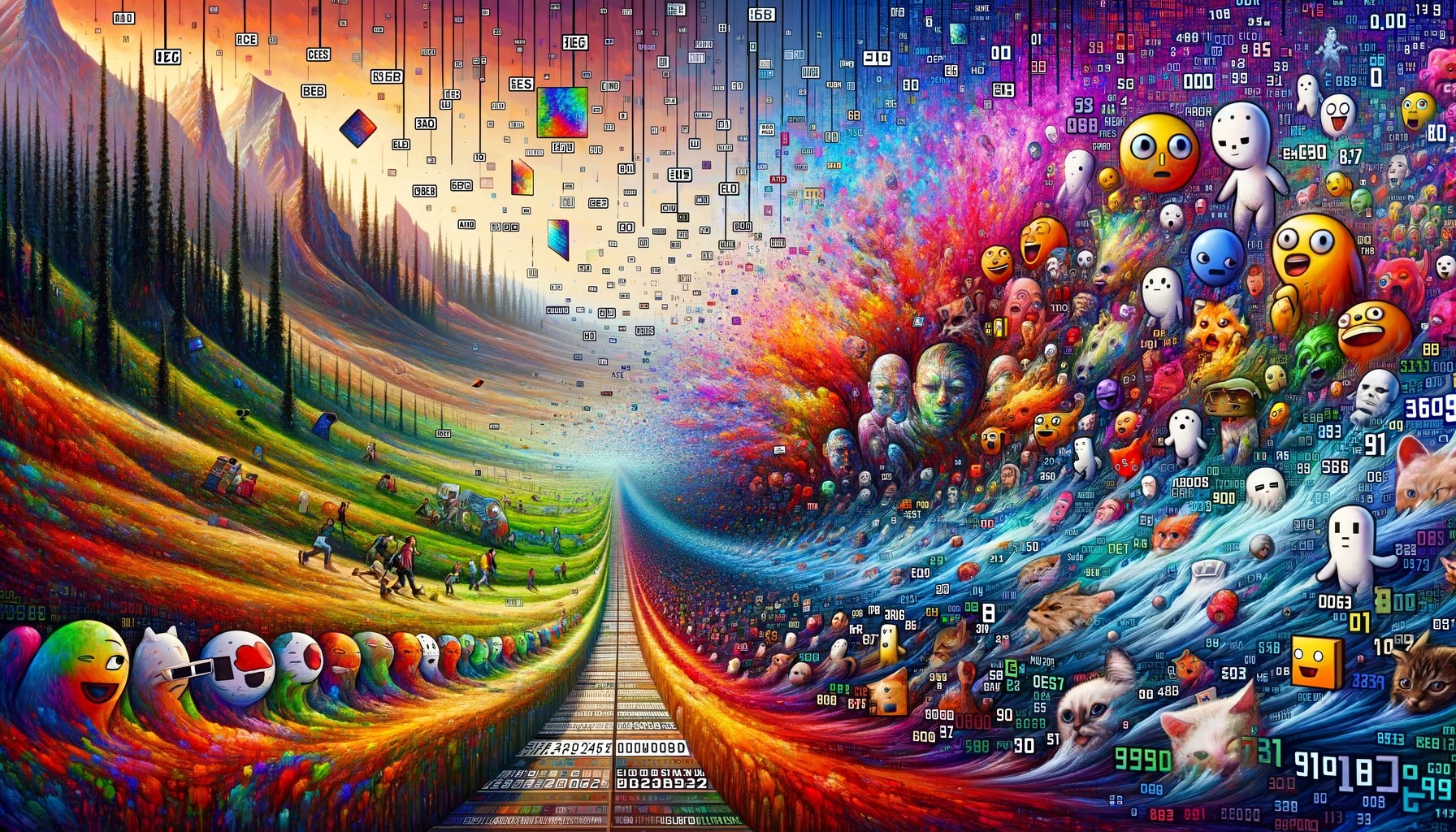
by Joche Ojeda | Jan 3, 2024 | A.I
Navigating the Limitations of Large Language Models: Understanding Outdated Information, Lack of Data Sources, and the Comparative Advantages of Retrieval-Augmented Generation (RAG)
Introduction
In the rapidly evolving field of artificial intelligence, Large Language Models (LLMs) like OpenAI’s GPT series have become central to various applications. However, despite their impressive capabilities, these models exhibit certain undesirable behaviors that can impact their effectiveness. This article delves into two significant limitations of LLMs – outdated information and the absence of data sources – and compares their functionality with Retrieval-Augmented Generation (RAG), highlighting the advantages of RAG over traditional fine-tuning approaches in LLMs.
1. Outdated Information in Large Language Models
A prominent issue with LLMs is their reliance on pre-existing datasets that may not include the most current information. Since these models are trained on data available up to a certain point in time, any developments post-training are not captured in the model’s responses. This limitation is particularly noticeable in fields with rapid advancements like technology, medicine, and current affairs.
2. Lack of Data Source Attribution
LLMs generate responses based on patterns learned from their training data, but they do not provide references or sources for the information they present. This lack of transparency can be problematic in academic, professional, and research settings where source verification is crucial. Users may find it challenging to distinguish between factual information, well-informed guesses, and outright fabrications.
Comparing LLMs with Retrieval-Augmented Generation (RAG)
Retrieval-Augmented Generation (RAG) presents a solution to some of the limitations faced by LLMs. RAG combines the generative capabilities of LLMs with the information retrieval aspect, pulling in data from external sources in real-time. This approach allows RAG to access and integrate the most recent information, overcoming the outdated information issue inherent in LLMs.
Why RAG Excels Over Fine-Tuning in LLMs
Fine-tuning involves additional training of a pre-trained model on a specific dataset to tailor it to particular needs or improve its performance in certain areas. While effective, fine-tuning does not address the core issues of outdated information and source attribution.
- Dynamic Information Update: Unlike fine-tuned LLMs, RAG can access the latest information, ensuring responses are more current and relevant.
- Source Attribution: RAG provides the ability to trace back the information to its source, enhancing credibility and reliability.
- Customizability and Flexibility: RAG can be customized to pull information from specific databases or sources, catering to niche requirements more effectively than a broadly fine-tuned LLM.
Conclusion
While Large Language Models have transformed the AI landscape, their limitations, particularly regarding outdated information and lack of data source attribution, pose challenges. Retrieval-Augmented Generation offers a promising alternative, addressing these issues by integrating real-time data retrieval with generative capabilities. As AI continues to advance, the synergy between generative models and information retrieval systems like RAG is likely to become increasingly significant, paving the way for more accurate, reliable, and transparent AI-driven solutions.

by Joche Ojeda | Dec 31, 2023 | A.I
Unpacking Memes and AI Embeddings: An Intriguing Intersection
The Essence of Embeddings in AI
In the realm of artificial intelligence, the concept of an embedding is pivotal. It’s a method of converting complex, high-dimensional data like text, images, or sounds into a lower-dimensional space. This transformation captures the essence of the data’s most relevant features.
Imagine a vast library of books. An embedding is like a skilled librarian who can distill each book into a single, insightful summary. This process enables machines to process and understand vast swathes of data more efficiently and meaningfully.
The Meme: A Cultural Embedding
A meme is a cultural artifact, often an image with text, that encapsulates a collective experience, emotion, or idea in a highly condensed format. It’s a snippet of culture, distilled down to its most essential and relatable elements.
The Intersection: AI Embeddings and Memes
The connection between AI embeddings and memes lies in their shared essence of abstraction and distillation. Both serve as compact representations of more complex entities. An AI embedding abstracts media into a form that captures its most relevant features, just as a meme condenses an experience or idea into a simple format.
Implications and Insights
This intersection offers fascinating implications. For instance, when AI learns to understand and generate memes, it’s tapping into the cultural and emotional undercurrents that memes represent. This requires a nuanced understanding of human experiences and societal contexts – a significant challenge for AI.
Moreover, the study of memes can inform AI research, leading to more adaptable and resilient AI models.
Conclusion
In conclusion, while AI embeddings and memes operate in different domains, they share a fundamental similarity in their approach to abstraction. This intersection opens up possibilities for both AI development and our understanding of cultural phenomena.

by Joche Ojeda | Dec 4, 2023 | A.I
Understanding AI, AGI, ML, and Language Models
Artificial Intelligence (AI) is a broad field in computer science concerned with building smart machines capable of performing tasks that typically require human intelligence. AI encompasses various subfields, including machine learning, natural language processing, robotics, and more. Its primary goal is to enable computers to perform tasks such as decision-making, problem-solving, perception, and understanding human language.
Machine Learning (ML), a subset of AI, focuses on developing algorithms and statistical models that enable computers to learn from and make predictions or decisions based on data. Unlike traditional programming, where humans explicitly code the behavior, machine learning allows systems to automatically learn and improve from experience. This learning process is driven by feeding algorithms large amounts of data and allowing them to adjust and improve their performance over time.
One of the most notable applications of ML is in the development of Language Models (LMs), which are algorithms designed to understand, interpret, and generate human language. These models are trained on vast datasets of text and can perform a range of language-related tasks, such as translation, summarization, and even generating human-like text. Language models like GPT (Generative Pretrained Transformer) are examples of how AI and ML converge to create sophisticated tools for natural language processing.
Artificial General Intelligence (AGI), on the other hand, represents a level of AI that is far more advanced and versatile. While current AI systems, including language models, are designed for specific tasks (referred to as narrow AI), AGI refers to a hypothetical AI that has the ability to understand, learn, and apply its intelligence broadly and flexibly, much like a human. AGI would possess the ability to reason, solve problems, comprehend complex ideas, learn from experience, and apply its knowledge to a wide range of domains, effectively demonstrating human-like cognitive abilities.
The relationship between AI, ML, AGI, and language models is one of a nested hierarchy. AI is the broadest category, under which ML is a crucial methodology. Language models are specific applications within ML, showcasing its capabilities in understanding and generating human language. AGI, while still theoretical, represents the potential future of AI where systems could perform a wide range of cognitive tasks across different domains, transcending the capabilities of current narrow AI systems.
In summary, AI is a vast field aimed at creating intelligent machines, with machine learning being a key component that focuses on data-driven learning and adaptation. Language models are a product of advancements in ML, designed to handle complex language tasks. AGI remains a goal for the future, representing a stage where AI could match or surpass human cognitive abilities across a broad spectrum of tasks and domains.


